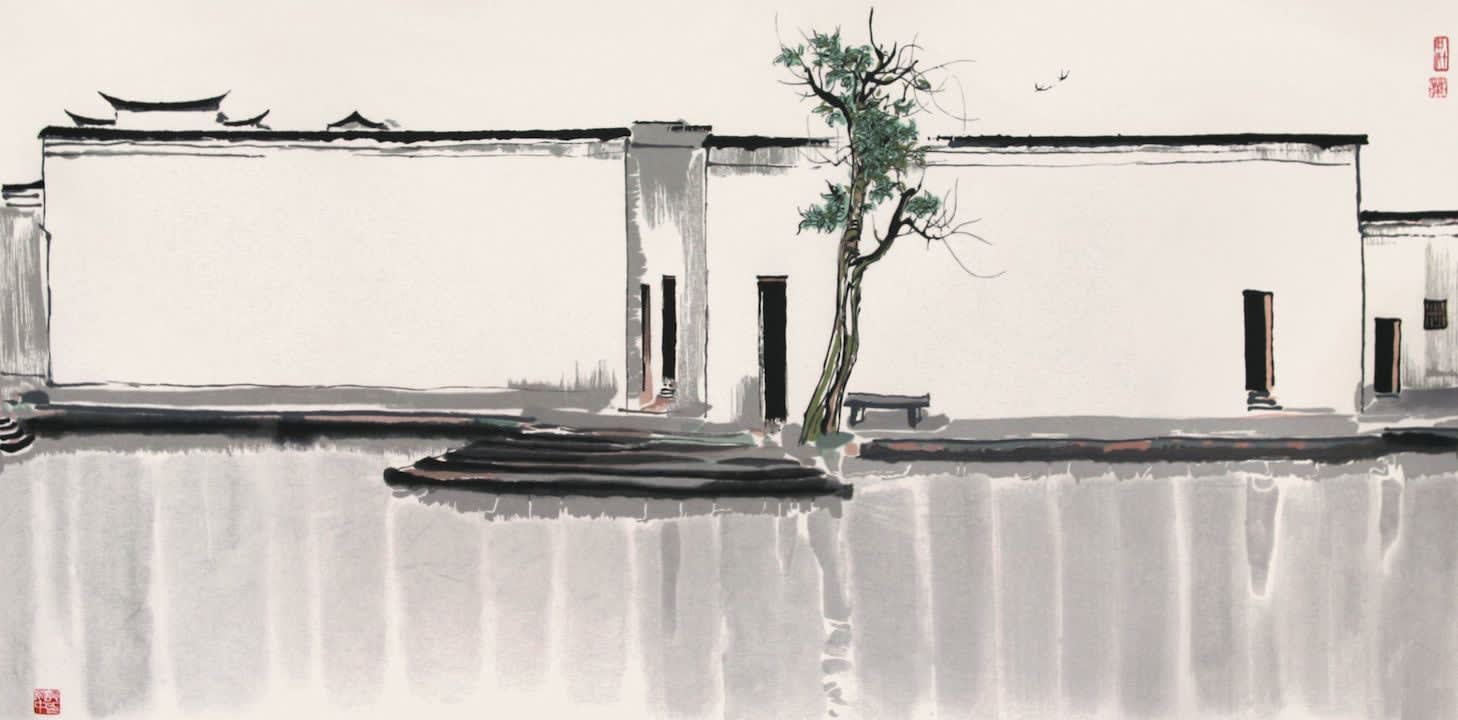Yan Gallery x Parklane Pullman: Artist Playground
Past exhibition
Wu Guanzhong 吳冠中 China, 1919-2010
A Pair of Swallows 雙燕, 1981
collotype print on rice paper
70 x 140 cm
Edition of 120
Black, white and grey are the main colours of the Jiangnan spring days. They are also bedrocks of the silvery-grey palette in Wu Guanzhong's paintings. These hues set foot on...
Black, white and grey are the main colours of the Jiangnan spring days. They are also bedrocks of the silvery-grey palette in Wu Guanzhong's paintings. These hues set foot on the path of his artistic journey. He said, "I have been drawing Jiangnan on and off all my life. Among my Jiangnan paintings, or even all my works, Two swallows is the most iconic and representative."
This painting combines Chinese ink techniques with geometric concept of the West. It inspired Wu to explore how best to blend the East and the West in art in the 1980s. Since then, he continued to experiment with almost pure abstract geometric shapes to express Eastern emotions, resulting in many captivating masterpieces.
「《雙燕》明確地表達了東方情思,即使雙燕飛去,鄉情依然。橫與直、黑與白的對比美在《雙燕》中獲得成功後,便成為長留我心頭的藝術眼目,如1988年的《秋瑾故居》(畫外話:忠魂何處,故居似黑漆棺材,生生燕語明如剪)。再至1996年,作《憶江南》,只剩了幾條橫線與幾個黑點(往事漸杳,雙燕飛了),都屬《雙燕》的嫡系。」——吳冠中
This painting combines Chinese ink techniques with geometric concept of the West. It inspired Wu to explore how best to blend the East and the West in art in the 1980s. Since then, he continued to experiment with almost pure abstract geometric shapes to express Eastern emotions, resulting in many captivating masterpieces.
「《雙燕》明確地表達了東方情思,即使雙燕飛去,鄉情依然。橫與直、黑與白的對比美在《雙燕》中獲得成功後,便成為長留我心頭的藝術眼目,如1988年的《秋瑾故居》(畫外話:忠魂何處,故居似黑漆棺材,生生燕語明如剪)。再至1996年,作《憶江南》,只剩了幾條橫線與幾個黑點(往事漸杳,雙燕飛了),都屬《雙燕》的嫡系。」——吳冠中
Provenance
Ping Art Space, TaipeiPrivate Asian Collection




